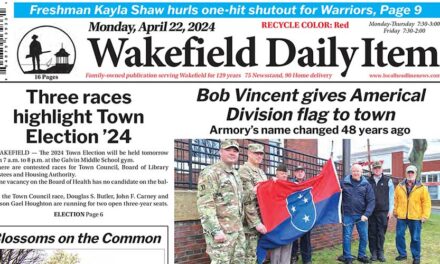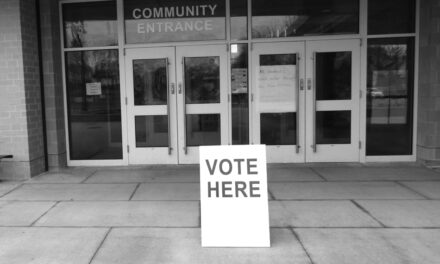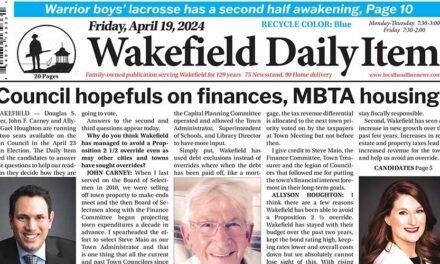Published in the February 24, 2017 edition.
By MARK SARDELLA
WAKEFIELD — There has been a spike in opioid-related overdoses state-wide with fentanyl involved in a high percentage of those cases. Unfortunately, Wakefield is not immune to the devastation inflicted by these drugs.
In 2016, unintentional opioid-related overdose deaths likely rose for a sixth consecutive year in Massachusetts and fentanyl played a role in as many as three-quarters of the fatalities, according to a new state report.
Fentanyl is a powerful synthetic opioid pain medication with a rapid onset and short duration of action. As of 2012, fentanyl was the most widely used synthetic opioid in medicine.
The latest figures released by the Massachusetts Department of Public Health (DPH) show 1,465 confirmed opioid-related deaths in 2016, with another 469 to 562 deaths suspected to be from overdoses but still awaiting final confirmation. Deaths for the year could approach or exceed 2,000 despite renewed efforts by the state to confront the epidemic.
While 2016 brought a decline in deaths blamed on heroin, it was offset by a corresponding increase in fentanyl-related overdose deaths. Toxicology screens showed fentanyl present in 75 percent of the fatalities, a percentage that has been rising sharply since mid-2015.
“We are seeing the same trends on a local and regional level when it comes to the fentanyl playing a role in overdose fatalities,” says Lauren Dustin, Coordinator for the Massachusetts Opioid Abuse Prevention Collaborative (MOAPC) serving the communities of Wakefield, Malden, Medford, Melrose, Reading and Stoneham. MOAPC is funded by the Department of Public Health, Bureau of Substance Abuse Services (BSAS).
“Our death record data collected from each community 2010-2016 shows fentanyl on the rise beginning in 2013,” Dustin says. “In 2014, 42 percent of death certificates list fentanyl as a substance in the system. In 2015 it was 65 percent, and for 2016 preliminary numbers are around 80 percent (we still have dozens of pending deaths of which we do not know the cause). This is only for deaths in the communities MOAPC serves. In some cases fentanyl is the only substance listed, but for many it is listed in combination with other drugs, like heroin, ethanol, cocaine, buprenorphine, and oxycodone. So when you compare our region to the state, we are a little bit higher than the quoted three-quarters of deaths involving fentanyl.”
Dustin says the problem with fentanyl is its potency.
“Sometimes heroin is cut or mixed with fentanyl — either knowingly or unknowingly by the user,” Dustin explains. “So, someone could be using heroin thinking it is pure heroin (meaning no fentanyl), but it could be intentionally altered by a dealer or trafficker. In other cases, someone might know they are using heroin mixed with fentanyl and choose to use that for a stronger high.
“Where the problem lies and why there are so many overdoses involving fentanyl is because of the potency of fentanyl. It is 50-100 times more potent than heroin, so it is very easy to overdo it when mixing into heroin,” Dustin says. “That, paired with the individual not knowing they are getting fentanyl is part of the reason for the increase in deaths.”
Another factor, Dustin says, is that first responders who administer Narcan to reverse overdoses are often up against a far more powerful opioid in fentanyl. Opioids block receptors in the brain and slow or stop the persons breathing, leading to overdose. Narcan works by knocking the opioids off the receptors in the brain.
During the first nine months of last year, the number of incidents in which emergency responders used Narcan rose 47 percent compared to the same period in the previous year, with figures not yet available for the final quarter of 2016.
“Naloxone (Narcan) is extremely effective at saving lives from any kind of opioid overdose,” Dustin says. “This is its only use, and it has no negative side effects. However, a trend that we have been hearing more and more is that first responders are having to administer two, sometimes three or four doses of Narcan to even get the person breathing again because of the strength of the opioid used.”
Narcan works for 30-90 minutes, Dustin adds, so it is vital that the person get additional medical treatment and supervision following an overdose.
While fentanyl is widely used in medicine as a pain reliever, most of the fentanyl being sold on the street does not originate from medical facilities.
“The fentanyl being sold on the streets here in Massachusetts is coming into the country mostly from Mexico, but also Canada,” Dustin says.
As far as the availability of resources to battle substance abuse in the Wakefield area, Dustin says it’s somewhat of a mixed bag.
“Drug treatment resources in our region (not including Boston) vary,” she says. “As far as inpatient services, including detox, transitional support services, and clinical stabilization services, our region is lacking these. Most people would have to go to Boston, Lynn, or even Tewksbury for these services. Our communities do, however, have recovery services including outpatient therapy, and access to medication-assisted treatment (MAT).
“Several of our communities have substance abuse prevention coalitions dedicated to preventing substance misuse and assist with access to treatment resources,” Dustin adds. “Melrose-Wakefield and Lawrence Memorial Hospital operate the Collaborative Outreach and Adaptable Care at Hallmark Health (COACHH) program.
Wakefield also has “WAKE-UP (Wakefield Unified Prevention) a coalition is dedicated to reducing alcohol, tobacco and other drug use among local residents, especially youth. Partnering locally and regionally, WAKE-UP takes a leadership role in implementing environmental and evidence-based substance abuse prevention strategies.
State officials have also pledged more resources to address the epidemic of opioid abuse and addiction.
“The opioid epidemic continues to threaten individuals and families all across Massachusetts and the country,” Republican Gov. Charlie Baker said in a statement.
Baker promised his administration would continue to add treatment options for people suffering with addiction while supporting the efforts of law enforcement to “arrest and convict drug traffickers who prey on vulnerable people, selling them more and more deadly and addictive substances.”
Last March, the governor signed what he called the most comprehensive law in the nation to fight the opioid addiction scourge, including a seven-day limit on first-time prescriptions for opiate painkillers. People often become addicted to heroin after first getting hooked on painkillers that were either prescribed to them or they obtained illegally.
The latest report shows a 15 percent reduction in the total number of prescriptions written for opioid painkillers in 2016, compared to the previous year.
State spending on addiction prevention and treatment has increased 50 percent since Baker took office in January 2015, the administration said.
Information from the Associated Press was used in this report.




